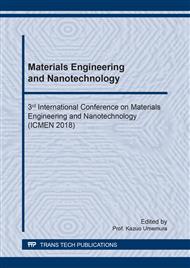p.105
p.110
p.116
p.121
p.126
p.136
p.142
p.151
p.159
Effect of Magnetic Field on the Fiber Orientation during the Filling Process in Injection Molding, Part 1: Simulation and Mold Design
Abstract:
Conductive polymer composite material is increasingly applied in a variety of fields, and its related processing technology has been a focus of research and development. Regarding magnetic fiber, because the orientation and distribution of the fiber affect the electrical and mechanical properties of products, the control of fiber orientation and distribution has been regarded as a key technology. This study used magnetic-assisted injection molding to control the orientation of magnetic fibers during the melt-polymer filling process. A special mold containing a magnetic apparatus was simulated and designed. Its material and thickness of various spacing blocks as well as the optimal layout of magnets in the mold were determined. An actual mold with the same magnet layout was then manufactured accordingly, and the measured magnetic flux density was compared with simulated results. This study also examined the coupled effect of magnetic and flow fields on the orientation of nickel-coated carbon fibers, calculating the magnetic moment produced due to the influence of the magnetic field on the fibers when melt polymer flowed through various positions in the cavity during the filling process. The flow trajectories of the fibers, which were affected by the magnetic field, were also predicted.
Info:
Periodical:
Pages:
126-135
Citation:
Online since:
October 2018
Authors:
Price:
Сopyright:
© 2018 Trans Tech Publications Ltd. All Rights Reserved
Share:
Citation:


